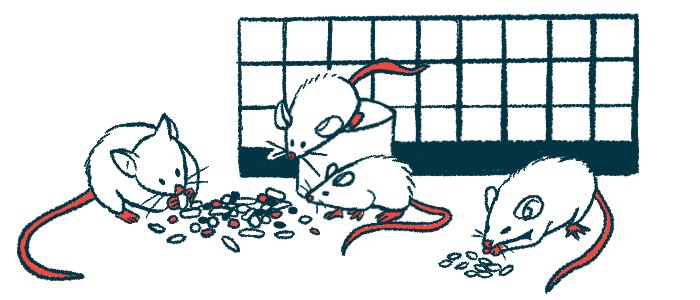C2-targeting mini-antibodies hold promise for CAD in preclinical data
Study finds Nab1B10 therapy, used in newly developed mouse model, effective

Specially designed miniaturized antibodies, or nanobodies, reduced blood cell destruction in a new mouse model of a disease similar to cold agglutinin disease (CAD), a study showed.
These findings suggest that the nanobodies, designed to suppress the complement cascade by blocking the complement component 2 (C2) protein, could be developed to treat CAD and other conditions driven by overactivation of the cascade, which is part of the immune system.
The study, “A nanobody-based complement inhibitor targeting complement component 2 reduces hemolysis in a complement humanized mouse model of autoimmune hemolytic anemia,” was published in Clinical Immunology.
CAD is a form of autoimmune hemolytic anemia (AIHA), a broad category of diseases in which the immune system attacks and destroys red blood cells. In CAD and other forms of AIHA, the complement cascade — particularly its classical pathway — becomes overactive, triggering an inflammatory reaction that destroys blood cells.
Blocking complement activation may help to decrease disease activity in CAD. The first approved therapy for the disease, Sanofi’s antibody-based therapy Enjaymo (sutimlimab-jome), suppresses the classical complement pathway by targeting the complement component 1.
Here a team of U.S. scientists developed a nanobody-based therapy, called Nab1B10, designed to block C2, a complement protein that’s involved in two of the three complement pathways: the classical and the lectin pathways.
Nanobodies are like miniature antibodies; certain animals like llamas and alpacas normally make nanobodies instead of antibodies. Due to their smaller size, nanobodies offer some advantages over antibodies for use as medications; they’re generally more stable, for example, and can more easily get through the body’s tissues.
Using standardized assays, the researchers confirmed that Nab1B10 specifically suppressed activation of both the classical and lectin complement pathways without affecting the alternative pathway, which is important to fight infections. This finding means that at least one of the complement pathways can still work normally to defend the body against microbes.
Given that Enjaymo blocks only the classical pathway, Nab1B10 “should exert the same, if not a superior, effect as [Enjaymo] in terms of treating” diseases like CAD, the team wrote.
In further studies, the researchers characterized in detail how Nab1B10 binds to the human C2 protein and how this stops the protein from activating the complement cascade. They also showed that multivalent nanobodies — structures where two or four nanobodies are fused together — based on Nab1B10 had increased complement-blocking activity.
Developing the right mouse model
Additional testing showed that Nab1B10 effectively blocked the activation of C2 protein from monkeys, but it did not interact with the protein’s version that is normally made by mice and other rodents. This finding poses challenges for preclinical testing that commonly involves mouse models.
To address this issue, the researchers developed a novel mouse model. They injected healthy mice with a mouse antibody against red blood cells that is known to promote complement-dependent AIHA.
Because they found that this effect was mainly driven by the alternative pathway, which is not affected by Nab1B10, they then injected the mice with human blood that lacked a key alternative complement pathway protein.
This way, they “developed a complement [humanlike] mouse model of AIHA in which hemolysis [red blood cell destruction] is mediated by activation of the human classical complement pathway,” the team wrote.
In this model, the Nab1B10 treatment “almost abolished classical complement pathway-mediated hemolysis,” the researchers wrote.
“This human classical complement pathway-mediated AIHA mouse model should be useful as a preclinical model for evaluating other agents that target the human classical complement activation pathway,” the researchers wrote.
The team concluded that their new nanobodies could be further developed as a potential treatment for complement-mediated diseases like CAD.






